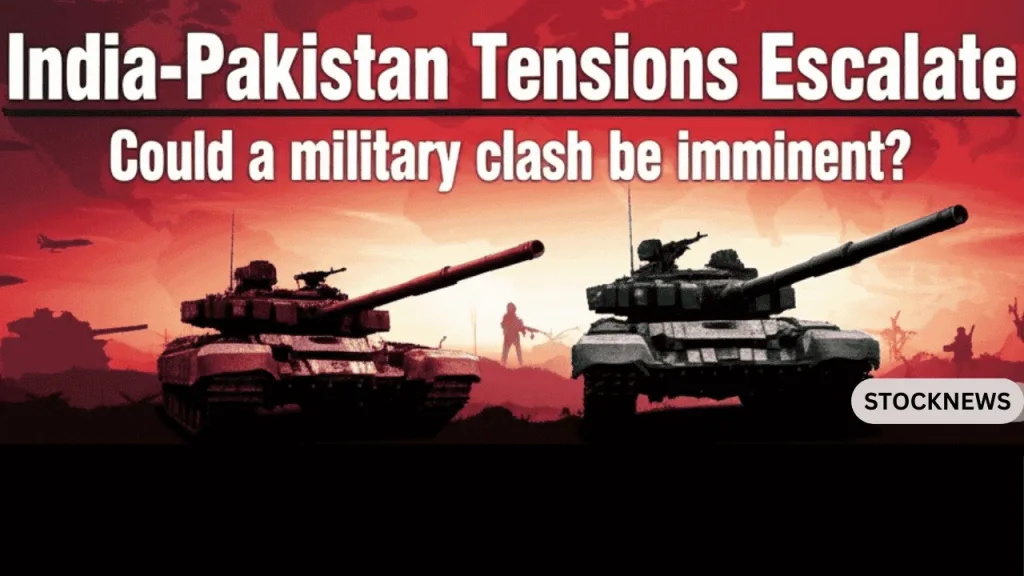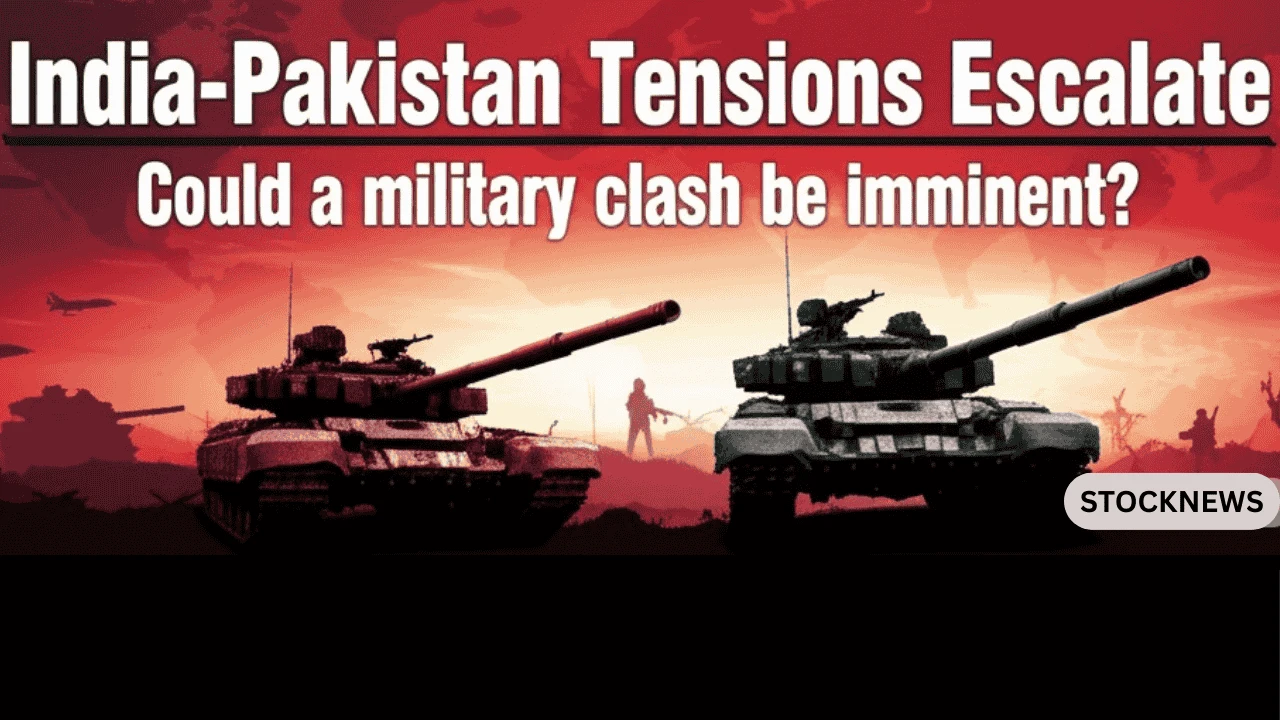New Delhi/Islamabad — A simmering conflict between India and Pakistan has escalated dramatically in recent days, as both nations brace for a possible military confrontation. With both sides intensifying military preparations and international actors weighing in, the region stands on the precipice of an alarming escalation that could have far-reaching global consequences.
India’s Stark Warning and Strategic Shift
In an emergency meeting convened yesterday, Indian Prime Minister Narendra Modi gathered the nation’s top military leaders, including the National Security Advisor, chiefs of the Army, Navy, and Air Force, as well as Defence Minister Rajnath Singh. The session focused on the growing security threat from across the border, particularly in light of recent intelligence reports pointing to increased cross-border terrorism and other provocations from Pakistan.
Prime Minister Modi’s message was unequivocal: the Indian military has been granted full autonomy to decide when, where, and how to retaliate. The statement signaled that India could be on the verge of launching a decisive military response, with the Prime Minister signaling a potentially robust escalation.
Following the meeting, Pakistan issued a chilling warning late into the night, claiming that, according to its intelligence, India could initiate a major attack within the next 24 to 36 hours. Pakistan’s defense officials emphasized their readiness to strike back should India launch an assault, reflecting a growing sense of apprehension in Islamabad.

International Calls for Restraint
The gravity of the situation has prompted swift diplomatic reactions from global powers. The United States, through Secretary of State Antony Blinken, urged both India and Pakistan to exercise restraint and prioritize de-escalation. While Washington did not explicitly name Pakistan, its comments on counterterrorism and regional security seemed to align with India’s stance, signaling implicit support for New Delhi’s fight against cross-border militancy.
China, a critical geopolitical player in South Asia, also weighed in, calling for both nations to avoid further conflict. The Chinese government stressed that an escalation would be detrimental not only to India and Pakistan but to regional stability as a whole.
A Game of Military Movements
In the midst of these mounting tensions, military movements in both India and Pakistan are being closely monitored. Perhaps the most significant development has been the repositioning of India’s aircraft carrier, INS Vikrant, which was initially described as being on a routine visit to the Arabian Sea for naval exercises. However, its current trajectory suggests that it may be headed toward Pakistani waters—an ominous signal of India’s readiness for military action. The Vikrant’s presence in the region is reminiscent of India’s naval strategy during the 1971 conflict, which saw significant strikes on Pakistan’s critical infrastructure, including its power grids and oil depots.
Additionally, India’s vast network of surveillance satellites has reportedly focused intently on Pakistani territory, monitoring military movements and gathering intelligence. Experts suggest that these actions are indicative of preparations for a major operation, which could include both conventional and cyber warfare tactics.
Pakistan’s Military Preparations
In response, Pakistan has been ramping up its own military readiness, with significant movements of tanks, artillery, and other heavy weaponry toward the Indian border. Social media footage from within Pakistan shows Al-Zarrar and Al-Khalid tanks being deployed to the frontlines. While these tanks are seen as outdated in comparison to India’s advanced T-90S tanks, Pakistan has also introduced the more modern VT-4 tanks, purchased from China. However, these are reportedly vulnerable to modern anti-tank weapons and drones, raising doubts about their effectiveness in a large-scale conflict.
Pakistan’s artillery is also being fortified, with the SH-15 truck-mounted howitzer making its way toward the border. Though these guns are formidable, their deployment may not be optimal for the mountainous terrain of Kashmir, which could limit their impact on the battlefield.
While Pakistan’s military buildup is visible, India has maintained a strict information blackout on its own troop movements. A recent advisory from the Indian government instructed the media and social platforms not to share any details about the Indian military’s preparedness, adding an element of uncertainty to the situation.
Strategic Focus on Punjab
While much of the conflict between India and Pakistan has centered around the disputed Kashmir region, India is reportedly shifting its military focus to the International Border (IB), particularly in the Punjab sector. The fertile plains of Punjab, stretching from Jammu’s Kathua district to Rajasthan’s Ganganagar, offer a strategic advantage for armored assaults. India’s Western Command, stationed in Chandimandir, is believed to have mobilized its Strike Corps, which includes T-90S tanks, BrahMos missiles, and advanced artillery systems like the Pinaka Multi-Barrel Rocket Launcher.
Punjab is not only the heart of Pakistan’s military structure, with key cities like Lahore, Rawalpindi, and Multan, but also its economic engine, contributing over 60% of Pakistan’s GDP. A military strike in this area could cripple Pakistan’s economy and undermine its military capabilities, forcing the Pakistani army to divert resources from other fronts.
A Two-Front War for Pakistan?
Compounding Pakistan’s challenges is the ongoing unrest in Baluchistan, where separatist movements have gained momentum, and the region’s leadership has declared open conflict with Islamabad. This development has created a potential two-front war for Pakistan—one with India along the eastern border and another with insurgents in the southwestern provinces.
This dual threat, combined with the increasing pressure from India, has left Pakistan’s leadership scrambling for a coherent strategy. Pakistani authorities are uncertain whether India will escalate the situation on the western border, in Punjab, or through other means such as cyber warfare.

Global Attention and the Path Forward
With tensions mounting on both sides of the border, the international community is anxiously watching the situation unfold. The calls for peace from the United States, China, and other global players underscore the urgency of avoiding a full-scale war. Yet, amid these appeals, both India and Pakistan seem locked into a path of confrontation, each watching the other for signs of weakness or hesitation.
As India prepares for a potential military response, the world is left grappling with a key question: Will diplomacy prevail, or is South Asia headed toward a new conflict that could reshape the region for years to come?
